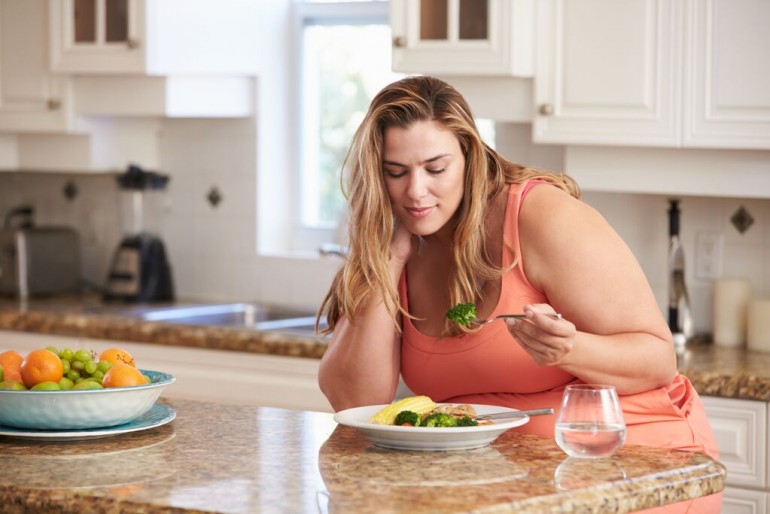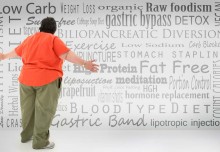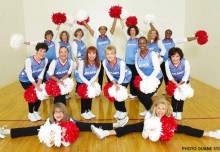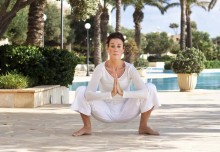
A conversation with Health and Fitness Expert, Kathy Smith
Fitness and lifestyle consultant Kathy Smith has been at the forefront of fitness and health for more than 30 years … but to look at her you wouldn’t know that was possible.
Kathy has sold about 20 million DVDs on walking, strength training, yoga, and more. She’s contributed so much to keeping women informed about their health. Kathy has also written some great books, including Feed Muscle, Shrink Fat Diet and Moving Through Menopause. She’s an all-around nice lady, incredibly talented and I’m honored to share our interview with you on belly fat and how to get rid of it.
My Interview:
Dr. Seibel: Is it possible to really have a flat abdomen after 40? How do you do it?
Kathy Smith: It’s probably the number one question I get when I’m doing speaking engagements. It definitely is possible, but it’s not one-size-fits-all or just one approach.
Here are some different aspects of how to get rid of belly fat and how to get a toned, tightened core.
Belly fat is more than looking good. Fat, especially in your mid-section, is not healthy .
Dr. Seibel: It’s the part that contributes to metabolic syndrome, which increases your risk of heart disease and diabetes. It includes high blood sugar, high blood pressure and high triglycerides, low good cholesterol and a waist in women of over 35 inches.
Kathy Smith: Yes. If you start to see your midsection widen out, take note. If you can’t zip up your pants, it’s time to take action.
Your abdominal region has different sets of muscles. When we look at the magazines and we see the six-pack abs, those are the rectus abdominis. They go from the pelvis up to the rib cage and are your crunching muscles. They’re your vanity muscles because you look good in a bathing suit.
Next, you have your obliques. These muscles run along your waistline and are your twisting muscles. You use this when you do a bicycle action on the floor.
The ones that I want to talk about today are the transverse abdominis, which go across your belly. If you imagine the sheath that goes from right to left, the way you would find these muscles is by pulling your belly button to your spine. In other words, think about how you suck in your belly a little when you put pants on – that sucking action, is your transverse muscles.
Those muscles are really important because they are the posture muscles that you use when you’re sitting, driving, and standing throughout the day. You don’t have to get down to the floor to use these muscles. And these are the muscles that we need to start training – especially as we age – to make sure that we have the strength to keep them lifted so we don’t start to get a potbelly and that lower belly pooch.
The way we train is very simple. When you’re sitting or standing, think about doing a little butterfly action where you pull your belly button to the spine and then release, repeating a few times. Pull in and hold for three and then release.
Dr. Seibel: How many times would you do that?
Kathy Smith: You would start out with just ten times and do them with concentration and focus. If you put your hand on your belly you can feel that action of it going in.
Dr. Seibel: Do you have to worry about doing this right after eating?
Kathy Smith: It’s kind of what your mom told you about swimming; “Don’t go swimming right after you eat.” Best to do it more on an empty stomach or a few hours after your meal.
Another way to strengthen this area is to get into a plank position – the top of a pushup. If you can’t hold the top of a pushup, you go down to your knees. If a pushup is too hard on your hands or your joints, go down to your elbows and get your body almost straight like an ironing board. Just think of your body as a straight line; everything in alignment. Shoulders are down; and right at that point, you want the ankles, hips and shoulders all in a straight line like a plank. From there, drop your belly, and then use those transverse muscles to lift it, and drop and lift. Doing that training action about another ten times starts to get you to find those muscles, engage those muscles and get you used to using those muscles throughout the day.
What about the fat? When it comes to the belly, you have the subcutaneous fat. That’s the fat you can pinch; your love handles. But below the belly fat and marbled within the organs and within your muscles, there’s something called visceral fat.
That internal fat is a little more dangerous, a little bit harder to get to and yet, that’s what creates the mass in our midsection. What are we going to do about that?
Sitting is the new smoking.
The best solution for that is exercise. But not just exercise … you need to move throughout the day. Sitting is the new smoking. If you sit for 8 hours in a row and have dinner and watch TV for another six hours, even if you go for a 30-minute walk in the morning, you basically negate the benefits of that walk.
So, get out and get moving. Depending on what your fitness level is now, there’s a range of aerobic activities that you can be doing from walking to interval training, to getting on a bicycle, and being active aerobically.
Dr. Seibel: If people are just in their home, even if they’re talking on the phone, they could be standing, or parking farther from the door at the grocery store. There’s a lot of ways people can stay active, if they think about it.
Kathy Smith: I’m totally in agreement with that. I’m constantly encouraging people, “Think about how can you move just a couple more minutes in your transition time.” If you’re going to go to the restroom and live in a two-story house, use the restroom downstairs and walk back up the stairs afterwards. If you’re in an office building, do the same thing. Find ways to engage your body throughout the day. Park farther from the grocery store rather than right next to the front door. Give yourself a five-minute walk. Those types of the things add up. It’s dramatic how much movement you get throughout the day.
You can also buy a stand-up desk or treadmill desk.
Dr. Seibel: There are some good stand-up desks that don’t cost a lot of money. I have one that has little arms and elbows that bend. I put it on top of my desk and adjust it if I want to sit on a stool or stand up, and it was very inexpensive.
Kathy Smith: I just got one called Rebel Desk and the price point is very reasonable. It’s not too large so you can fit it into smaller spaces. You’ll find you’re not going to be standing and walking all the time. But imagine if you take a few hours throughout the day when you’re talking on the phone. Even right now as I’m talking to you, I’m standing up. I sit down for five minutes, then stand up for five minutes because I can talk to you and have a better conversation because standing increases my energy.
Dr. Seibel: And you get more air.
Kathy Smith: Yeah! I get better airflow. I feel my thoughts coming a little more quickly because it’s just a little bit better circulation. Again, everybody should understand, when we talk about treadmill desks, you’re not jogging or going quickly; it’s 0.3 miles per hour. You’re walking at a very, very slow pace. Imagine going home at night and answering emails, paying your bills and catching up with your kids while standing on a treadmill. This is how we change the way that we age, the way we change our energy levels, and our relationship to belly fat. This is how you start to tackle the midsection: I can’t give you just one exercise – go do a crunch with a curl and that’s going to impact this area. It will impact some of the muscles but it’s not going to impact fat the way we’re talking about.
Dr. Mache Seibel: There you go!
The belly fat story is one that affects women in a lot of ways. We talked about how it’s unhealthy, but for many women it also has an impact on self-esteem. You were talking about some of the best exercises for belly fat.
Kathy Smith: We talked already about how we burn belly fat, especially the visceral fat, with some cardio exercises. We talked about the transverse abdominis in doing some exercises throughout the day to strengthen those posture muscles. I really would like to just segue now into strength training.
I think it’s underestimated. Most women shy away from strength training, and yet after the age of 30, muscle mass is lost every single year. And as we become perimenopausal and menopausal, that’s accelerated. So, we want to make sure that we’re doing exercises for all the major muscle groups in the body: your biceps, triceps, and working down your body, your chest, back, gluteus, hamstrings and quads.
Functional fitness involves things we naturally do like picking up the kids or the groceries or taking our briefcase to the car
There’s a term called functional fitness or functional exercises – these are movements that use almost all of those muscles in one exercise. So if you imagine exercising the way that we move in everyday life, you can get through the exercises in 10 to 15 minutes, two to three times a week and you will hit all these major muscle groups.
Dr. Seibel: Functional fitness involves things we naturally do like picking up the kids or the groceries or taking our briefcase to the car, or getting up off the floor if we fall down or if we’re sitting on the floor, right?
Kathy Smith: Exactly. We try to mimic the moves that we do in everyday life. So, imagine picking up a bag of groceries, twisting and putting it up on a corner, or having to release something and putting it up on the ledge; or getting on the airplane and picking up your suitcase to put it in the overhead compartment. Those sorts of movements are using all these muscle groups simultaneously in a chain reaction.
When you do something like a lunge with overhead press, a dip with the bicep curl, all of a sudden you are now combining movement, you get to not only use the muscles I just mentioned but you use your balance. That’s what I’m big on. As we age, one of the things that come into play is balance; you need balance to walk.
Dr. Seibel: That is really important. As people get older they have a tendency to fall and that puts them at risk for breaking a hip. I live in New England and when the snow is out and there’s ice on the ground, many times I’ve almost tripped and fallen but fortunately I have good balance. I’m able to catch myself and not fall down and hit something or break or bruise something, so balance is really important.
Kathy Smith: Right. And what you just mentioned there, that’s exactly the type of training that I encourage people to approach in their fitness, every single day –dynamic balance. You’re walking, you trip a little bit and you have to recover so you don’t fall. Static balance is like, OK, I’m standing on one leg, I’m going to lift the other leg up and I’m going to balance for ten seconds – and that’s a great place to start. Then, you lift the leg a little bit higher and then maybe even with that static balance, you try closing your eyes or you try to just lift your arms overhead.
But after you feel comfortable with that static balance, you do something where you try to jump and land on one leg, so I jump maybe two feet, a foot even, to one side and I land on one leg, and then I jump to the other side and land on the other leg, and I just try to hold this for 5 to 7 seconds after I jump. That dynamic balance helps you recover from a quick slip.
Think of all the things that require strength, from sitting down on the toilet to getting out of car or lifting groceries. It’s hand strength, leg strength, core strength.
I have people start a program, learning how to do a proper squat, and they say, “I can’t squat. My knees are bad.” They’ll have a reason why they can’t, and I say, “Every time you sit down to go to the bathroom and get back up again, you’re doing a squat action.”
Every time you sit down to go to the bathroom and get back up again, you’re doing a squat action.
Dr. Seibel: Very true. And muscle burns more calories than fat. Every time you add muscle you’re burning six calories per gram instead of two calories per gram with fat.
Kathy Smith: Yes, I know. It’s a fun way. It’s sort of like putting money in your bank account and it starts giving you interest. That’s just added benefit.
When you’re sitting at your desk, you’re burning more calories if you have more muscle in your body. That’s why strength training is so important and it’s really also important to work the posterior chain – the back side of your body, from your shoulders down through your upper back, middle back, lower back, glutes, hamstring, and calf. We tend to ignore the posterior chain.
We look again at the vanity muscles – I want those abs, those arms, a little chest. But it’s really the back side of our body is so important for preventing back pain, for maintaining a balance between the front side of our body. We tend to get more quad dominant, or the front part of our leg becomes stronger as we age, the back part starts to weaken. That’s really because as you walk, you typically are using more of your quad. To use your hamstring and glutes, you need to do more strength training or sprinting or things that we typically aren’t doing now.
To compensate for that, to work that posterior chain – especially for posture – I’ll just finish off with my favorite exercise I do every day. I’ll explain how it relates to belly fat.
If you are sitting on a chair right now, sit up straight and pinch your shoulder blades together, not lifting up them up to your ears, but keeping them down while pinching them together like you’re trying to pinch a pencil between your shoulder blades and then release it. Those are your rhomboids.
As we get older and the rhomboids weaken, our chest muscles, the pectorals, they tighten up because all we do is sit at the computer all day and we get rounded. And we want to reverse that. We want to stretch out the chest and strengthen those rhomboids. That’s going to give us that erect posture which if I was standing in front of you, I could show you how you could look ten pounds thinner in one minute.
Dr. Mache Seibel: Won’t you like that? Well, you know, you stand with such great posture, it gives it a feeling – to people who see you, you look more confident, you look more poised, you look more in command. It changes how people respond to you and that’s another reason to keep those back muscles strong because they’re going to pull your shoulders back and help you stand upright with good posture.
Kathy Smith: I have to tell you, I did a workshop once and they started the workshop off with that exercise. They just said, “OK, lean forward, slump a little more than you’d normally slump, slump even a little more and just be there for 30 seconds. Just notice your mental state and you start to feel grounded and you feel your breathing is cut off and everything. Now just pull it up and then notice the shoulders coming back. And then exaggerate it, become even more like Superman, stick out that chest, and just notice in 30 seconds, the change in your mental state.” That’s powerful – you could impact your mental state by just how you stand.
Dr. Mache Seibel: Are there any foods that you would recommend people to stay away from, or to make sure they incorporate that are particularly helpful?
Kathy Smith: Well, when it comes to belly fat, the topic of the day and overall health, it’s cutting back or cutting out on sugars and refined carbohydrates. That’s a given and that’s for health reasons, but really when it comes to metabolic syndrome and belly fat, that’s upmost importance. What you want to be eating is a well-balanced diet, with good sources of protein, some great fish a couple times a week. If you eat meat, going for clean cuts of meat that are grass-fed if you can, but just good cuts of meat. Green, anything green, every single day I make sure there’s some kind of greens whether it’s in my salad, smoothies, or steamed. Eat kales, chards, spinach, something green, and a vast array of colorful vegetables. When I make a salad, I think to myself: do I have orange, red, green, maybe a little purple in there?
When I make a salad, I think to myself: do I have orange, red, green, maybe a little purple in there?
Dr. Mache Seibel: Keeping it color complimented, just make it a rainbow.
Kathy Smith: Yeah, exactly. Get something fermented in that salad or throughout the day. That’s just good…
Dr. Mache Seibel: We’re not talking beer here, we’re talking about sauerkraut or something like that.
Kathy Smith: Yes, exactly. I put a little of the sauerkraut in my salads, that’s how I like to get my fermentation.
You want to make sure the bacteria in the belly have a good metabolic tool down there to help with digestion. You need think about, digestion and elimination: if you’re constipated, if you’re not eliminating properly, then you’re not going to have a good solid belly, it really interferes… to get those muscles, you have to be able to find them.
You have nerves and they send the signal from the brain and it’s telling your body we need to engage this muscle. There’s a nerve going into those muscles, but if you are bloated and you’re constipated, it interferes with those signals. And so, it’s one of those things you want to think about, how do we keep proper elimination.
Another big key is how do we stay hydrated and how do we keep that friendly flora going all the time, especially if you decide to go on antibiotics. I always come back to: do I have a good balance in my gut? Start to think about that from the food – what is upsetting the balance. The balance will be upset if we put too many sugars and too many refined carbohydrates into our system.
Dr. Mache Seibel: Well, you’ve given a lot of information for people to be thinking about and it’s all very important. The thing about it is, you actually live this, and have throughout your whole career, as you have gone through your pregnancies and into years beyond it and so forth. Every time you have gone through a life change, you have found the right kind of exercises to share with women and show them that they don’t have to compromise because they’re at different point in time. That they can actually continue to have the elegance, the poise, the beauty, and the strength that they need to have a functionally fit life and a happy and vibrant one. So, I really want to thank you for spending time with me today.
Kathy Smith: Well, it was a pleasure. You are just wonderful. I adore what you’re doing and the message you’re getting out to women, people across United States so it’s a pleasure being here. I look forward to more talk time.
Dr. Mache Seibel: Thank you. Myself as well. We have been talking to fitness and lifestyle consultant, Kathy Smith. She’s recently launched Ageless with Kathy Smith, a new age-fighting DVD. It’s a whole workout line with award-winning producer, Acacia, that includes “Staying Strong” and “Total Body Turnaround.”
Remember – it’s better to stay well than to get well, so stay well!





